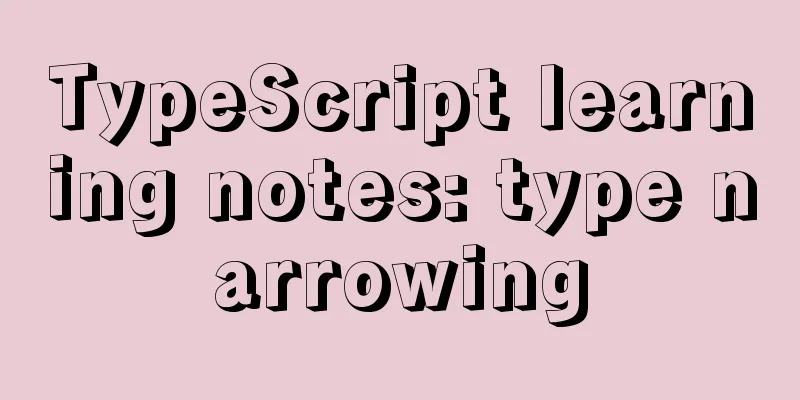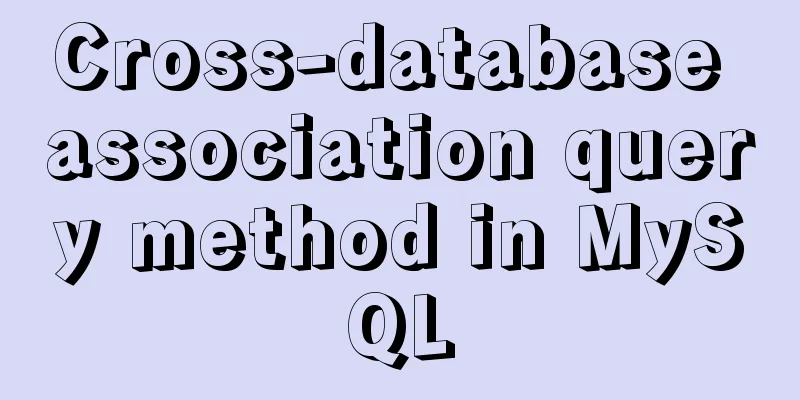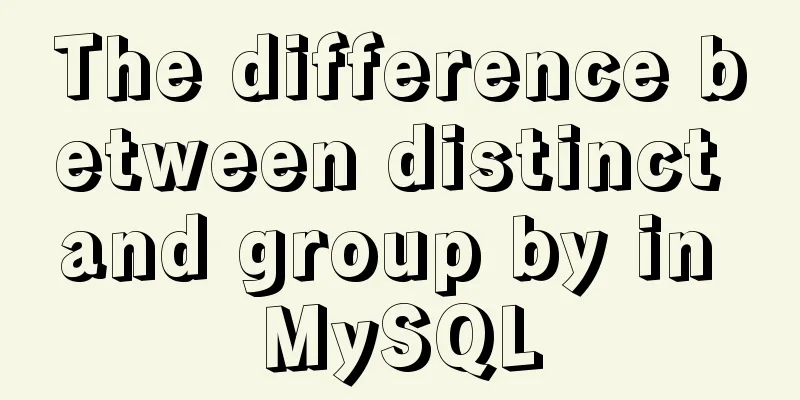TypeScript learning notes: type narrowing

PrefaceThe best thing about TS is strong typing, which is followed by type narrowing. I will summarize it while I am at it. Type InferenceIn TypeScript, type inference helps provide types where there are no explicit types. Example: let x = [0, 1, null] // number let x = Math.random() < 0.5 ? 100 : "helloword" // number|string let x: Animal[] = [new Rhino(), new Elephant(), new Snake()]; // Rhino | Elephant | Snake If no best common type is found, the result of type inference is a union array type. Union Types and Type Guards Example:
// Union type type Types = number | string
function typeFn(type: Types, input: string): string {
// If you write this, you need to determine the type of type}
Can directly assign type inference let x:number|string = 1 x="tiedan" If you don't judge, you will get an error.
function typeFn(type: number | string, input: string) {
// Error operator + cannot be applied to string
return new Array(type + 1).join("") + input
}
So we have to judge
function typeFn(type: number | string, input: string) {
// Type guard if (typeof type === 'number') {
return new Array(type + 1).join(" ") + input
}
return type + input
}
Type narrowing is to redefine a more specific type based on the judgment type So the question is, why learn this? Isn't js good? Personal opinion: Using TypeScript can help you reduce the vulnerability of JavaScript as a weak language, and reduce the risk of errors caused by incorrect types and the risk of errors caused by mixing various JavaScript versions. TypeScript simply introduces the most important feature of strong typing of high-level languages into JavaScript, which solves the problem of preventing unexpected errors caused by data type conversion when writing JavaScript code, which increases the difficulty of troubleshooting. Type guards for typeof: "string" "number" "bigint" // ES10 adds "boolean" "symbol" // ES6 adds "undefined" "object" "function" Note: typeof null is equal to object therefore:
function strOrName(str: string | string[] | null) {
if (typeof str === 'object') {
for (const s of str) {
// Report an error because str may be null
console.log(s)
}
} else if (typeof str === 'string') {
console.log(str)
} else {
//......
}
}
Truth value narrowingThe truth table of js is very complicated. Except for the following, which is false, all others are true. 0 NAN "" 0n // Bigint version of 0 null undefined To avoid null errors, you can use truth value narrowing
// Use true value to judge if (str && typeof strs === 'object') {
for (const s of strs) {
console.log(s)
}
}
Or this is also OK
function valOrName(values: number[] | undefined, filter: number): number[] | undefined {
if (!values) {
return values
} else {
return values.filter(x => x > filter)
}
}
Summary: Truth value narrowing helps us better handle null/undefined/0 and other values Narrowing of equalityIf you want to narrow the equality, you can use operators such as ===, !==, ==, and, and != to narrow the equality. Example 1:
function strOrNum(x: string | number, y: string | boolean) {
if (x === y) {
// string
} else {
// string|number
}
}
Example 2:
function strOrName(str: string | string[] | null) {
if (str !== null) {
if (typeof str === 'object') {
for (const s of str) {
console.log(s) // []
}
} else if (typeof str === 'string') {
console.log(str) // string
} else {
// .....
}
}
}
Example3:
interface Types {
value: number | null | undefined
}
function valOrType(type: Types, val: number) {
// null and undefined are both false and can only be numbers
if (type.value != null) {
type.value *= val
}
}
in operator narrowingin checks whether there is a property in the object, and now acts as a "type guard". Example:
interface A { a: number };
interface B { b: string };
function foo(x: A | B) {
if ("a" in x) {
return xa;
}
return xb;
}
Narrowing instanceofThe right-hand side of an instanceof expression must be of type any, or of a type assignable to the Function interface type. Example:
function dateInval(x: Date | string) {
if (x instanceof Date) {
// Date
} else {
// string
}
}
The nature of narrowingThe essence of narrowing is to redefine the type Example:
function example() {
let x: string | number | boolean
x = Math.random() < 0.5
if (Math.random() < 0.5) {
x = 'hello' // string
} else {
x = 100 // number
}
return x; // string|number
}
Narrowing of Union TypesExample 1:
interface Shape {
kind: "cirle" | "square",
redius?: number
sideLength?: number
}
// Error function getArea(shape: Shape) {
return Math.PI * shape.redius ** 2
}
// Narrowing or error function getArea(shape: Shape) {
if (shape.kind === 'cirle') {
return Math.PI * shape.redius ** 2
}
}
// Using non-null assertion function getArea(shape: Shape) {
if (shape.kind === 'cirle') {
return Math.PI * shape.redius! ** 2
}
}
Example 2:
interface Circle {
kind: "cirle";
redius: number;
}
interface Square {
kind: "square";
redius: number;
}
type Shape = Circle | Square
function getArea(shape: Shape) {
if (shape.kind === 'cirle') { // narrow return Math.PI * shape.redius ** 2
}
}
// or function getArea(shape: Shape) {
switch (shape.kind) {
case "cirle":
return Math.PI * shape.redius ** 2
case "square":
return shape.sideLength ** 2
default:
const _example: never = shape
return _example
}
}
SummarizeThis is the end of this article about TypeScript learning notes on type narrowing. For more relevant TypeScript type narrowing content, please search for previous articles on 123WORDPRESS.COM or continue to browse the following related articles. I hope everyone will support 123WORDPRESS.COM in the future! You may also be interested in:
|
<<: How to modify the master-slave replication options in MySQL online
>>: Ubuntu 16.04 kernel upgrade steps
Recommend
Use of Linux file command
1. Command Introduction The file command is used ...
Summary of Vue3 combined with TypeScript project development practice
Table of contents Overview 1. Compositon API 1. W...
How to deploy MySQL and Redis services using Docker
Table of contents How to deploy MySQL service usi...
Implementation steps for enabling docker remote service link on cloud centos
Here we introduce the centos server with docker i...
Web Theory: Don't make me think Reading Notes
Chapter 1 <br />The most important principl...
Modify the boot time of grub in ubuntu
The online search to modify the grub startup time...
MySQL 5.7.22 binary package installation and installation-free version Windows configuration method
The following code introduces the installation me...
MySQL fuzzy query statement collection
SQL fuzzy query statement The general fuzzy state...
Native js to achieve accordion effect
In actual web page development, accordions also a...
The benefits of div+css and web standard pages
The div element is used to provide structure and b...
How to use cutecom for serial communication in Ubuntu virtual machine
Using cutecom for serial communication in Ubuntu ...
How to install and uninstall IIS7 components using the WIN2008 server command line
Note: Since .NET FrameWork cannot be run in core ...
Quickly solve the problem of garbled characters and jump lines in mysql exported scv files
Due to work reasons, it is often not possible to ...
How to prevent users from copying web page content using pure CSS
Preface When I was typing my own personal blog, I...
Detailed explanation of html-webpack-plugin usage
Recently, I used html-webapck-plugin plug-in for ...









